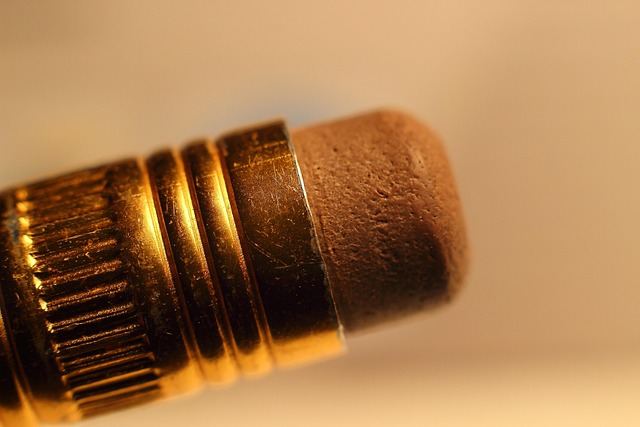Homeowners dealing with tiled surfaces face a common issue: grout line stains caused by water damage, mold, or dirt. Effective removal requires identifying stain types and selecting appropriate tools like grout cleaners, acid solutions, baking soda, or vinegar. Preparation involves sweeping debris and applying a cleaner for several minutes. Gentle scrubbing with a soft-bristled brush is followed by rinsing and drying. Natural cleaning agents like baking soda and vinegar are eco-friendly alternatives. Regular sealing and maintenance prevent future staining, ensuring clean grout lines.
Grout line stains can mar the aesthetic appeal of your tiled surfaces, but fear not! This comprehensive guide will empower you to remove those unsightly marks. We’ll unravel the mysteries of grout line stains, exploring their causes and diverse types. From pre-treatment preparation to advanced cleaning techniques, natural remedies, and maintenance tips, we’ve got you covered. Discover the right tools, effective scrubbing methods, and sealing strategies to keep your grout lines looking fresh and stain-free for years to come.
Understanding Grout Line Stains: Causes and Types

Grout line stains can be a common and frustrating issue for homeowners, especially those with tiled floors or walls. Understanding the causes and types of these stains is the first step in effectively removing them. Stains in grout lines often occur due to various factors such as water damage, mold growth, dirt accumulation, and even improper sealing during installation.
There are several types of grout line stains, each requiring a tailored approach for removal. These include discoloration from mold or mildew, oil and grease buildup, hard water deposits, and stains caused by cleaning products. Identifying the specific type of stain is crucial as it determines the best method to employ—whether that be using specialized grout cleaners, acid-based solutions, or natural remedies like baking soda and vinegar.
Pre-Treatment: Preparing the Area for Stain Removal

Before tackling any stain removal process, proper preparation is key. When it comes to removing stains from grout lines, pre-treatment involves several steps. Begin by sweeping or vacuuming the affected area to eliminate loose debris and dust. This initial step prevents particles from embedding themselves into fresh cleaning solutions, ensuring your efforts are more effective.
Next, mix a suitable grout cleaner or stain remover with water according to the product’s instructions. Apply this solution liberally to the stained grout lines, allowing it to saturate the affected areas for several minutes. This step helps to soften and break down stubborn stains, making them easier to remove. Use a soft-bristled brush or sponge to gently scrub the stained areas, being careful not to damage the surrounding grout or tile.
Choosing the Right Cleaning Agents for Optimal Results

When it comes to removing stains from grout lines, the first step is choosing the right cleaning agents. Opt for products specifically designed for tile and grout, as these formulations are gentle enough not to damage the surfaces while powerful enough to break down grime and dirt. Avoid using harsh chemicals like bleach or ammonia-based cleaners, which can stain or corrode the grout material. Instead, consider natural or enzyme-based cleaners that are both effective and safe.
For best results, test any cleaning agent on a small, inconspicuous area first to ensure it doesn’t cause discoloration or damage. Once you’ve confirmed its suitability, apply the cleaner to the stained grout lines using a soft-bristled brush or sponge. Let it sit for the recommended time, usually a few minutes, before scrubbing gently with a damp cloth. Rinse thoroughly with warm water and dry completely to prevent new stains from forming.
Effective Scrubbing Techniques to Lift Stains

Effective scrubbing techniques are essential for removing stains from grout lines. Start by dampening a soft-bristled brush or sponge with warm water and a mild detergent. This combination helps to loosen and break down stain particles. Gently scrub the stained area in a back-and-forth motion, ensuring you apply consistent pressure to lift the stains effectively.
For tougher stains, consider using a grout cleaning solution or a mixture of baking soda and vinegar. These powerful yet gentle cleaners can penetrate deeply into the grout lines, dissolving grime and restoring the clean, crisp look of your tiled surfaces. Always test any cleaning agent on a small, discreet area first to ensure it won’t cause discoloration or damage.
Drying and Sealing: Preventing Future Discoloration

After successfully removing grout line stains, proper drying and sealing are essential steps to prevent future discoloration. Allow the grout lines to air dry completely before applying a high-quality sealant. This protective layer will create an impenetrable barrier, shielding the grout from absorbing new stains.
Sealants are designed to fill in microscopic pores within the grout, blocking out dirt, moisture, and other stain-causing agents. By sealing the grout lines, you ensure that even if a new spill or substance comes into contact with the surface, it won’t penetrate deep enough to cause discoloration. Regular reapplication of sealant every 6-12 months can significantly extend the life of your freshly cleaned grout lines.
Common Mistakes to Avoid During the Stain Removal Process

When tackling grout line stain removal, it’s easy to make mistakes that can prolong the cleaning process or even cause further damage. One common error is using aggressive scrubbers or chemicals straightaway; this can scratch the grout and tiles, especially if done without testing a small, inconspicuous area first. Always opt for a soft-bristled brush or cloth and gentle cleaning agents to avoid damaging your grout lines.
Another mistake to steer clear of is not identifying the stain’s source accurately. Different stains require specific removal techniques. For instance, mold and mildew may need a mild bleach solution, while oil or grease stains could be best tackled with a detergent and warm water mixture. Using the wrong method can lead to ineffective cleaning or potential discolouration.
Advanced Methods for Stubborn Grout Line Stains

When traditional cleaning methods fall short, it’s time to explore advanced techniques for removing stubborn grout line stains. One effective approach is using specialized grout stain removers that contain powerful enzymes capable of breaking down and eliminating organic contaminants deeply embedded in the grout. These products are designed to penetrate the grout lines, dissolve tough stains, and restore a fresh, clean appearance.
For more persistent stains, consider implementing physical methods such as scrubbing with a stiff-bristled brush or utilizing steam cleaners. Steam can effectively loosen and remove dirt, grease, and other debris, making it an excellent pre-cleaning step before applying any chemical agents. Additionally, combining these advanced methods with regular maintenance practices, like sealing the grout after cleaning and preventing excessive moisture, can significantly prolong the cleanliness and aesthetics of your grout lines.
Natural Remedy Options for Eco-Friendly Cleaning

When it comes to eco-friendly cleaning, there are several natural remedy options that can effectively remove stains from grout lines. Baking soda and vinegar is a classic combination; the abrasive properties of baking soda combined with the acidic nature of vinegar create a powerful cleaning agent that can tackle tough stains. Simply mix equal parts baking soda and vinegar, creating a paste, and apply it to the stained areas. Let it sit for about 15 minutes, then scrub gently with a soft brush or sponge before rinsing thoroughly.
Another natural option is lemon juice, which acts as a natural bleach, effectively lightening and removing stains. Cut a fresh lemon in half and rub it directly onto the grout lines. Leave it to soak for an hour or so, then wipe away the residue. For more stubborn stains, you can create a paste with lemon juice and baking soda, applying it to the affected areas and letting it work its magic before rinsing clean. These methods not only ensure your grout lines are stain-free but also contribute to a cleaner, greener home environment.
Maintenance Tips to Keep Grout Lines Looking Fresh

Regular maintenance is key to keeping grout lines looking fresh and stain-free. A simple and effective way to prevent staining is to regularly clean your grout lines with a mixture of warm water and mild detergent. Use a soft-bristled brush or sponge to gently scrub away any dirt, grime, or debris that has accumulated. This regular cleaning routine will help to remove the buildup of oils, soap scum, and other substances that can contribute to staining over time.
In addition to regular cleaning, sealing your grout lines is another important maintenance tip. Applying a high-quality grout sealer after cleaning will create a protective barrier, making it easier to remove future stains. Look for sealers specifically designed for grout, as they are formulated to penetrate the porous material and provide long-lasting protection against water, dirt, and other contaminants. By incorporating these simple yet effective maintenance practices into your home care routine, you can ensure that your grout lines remain looking crisp and clean for years to come, making it easier to Remove Stains from Grout Lines when they do occur.
